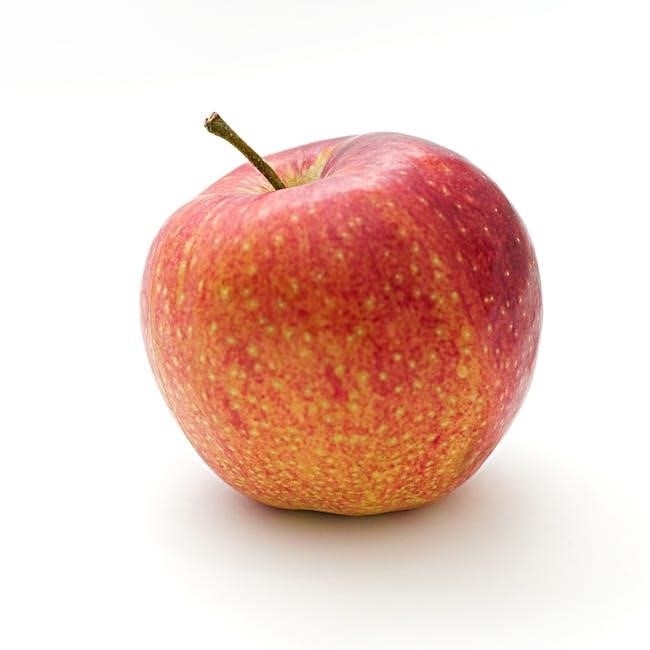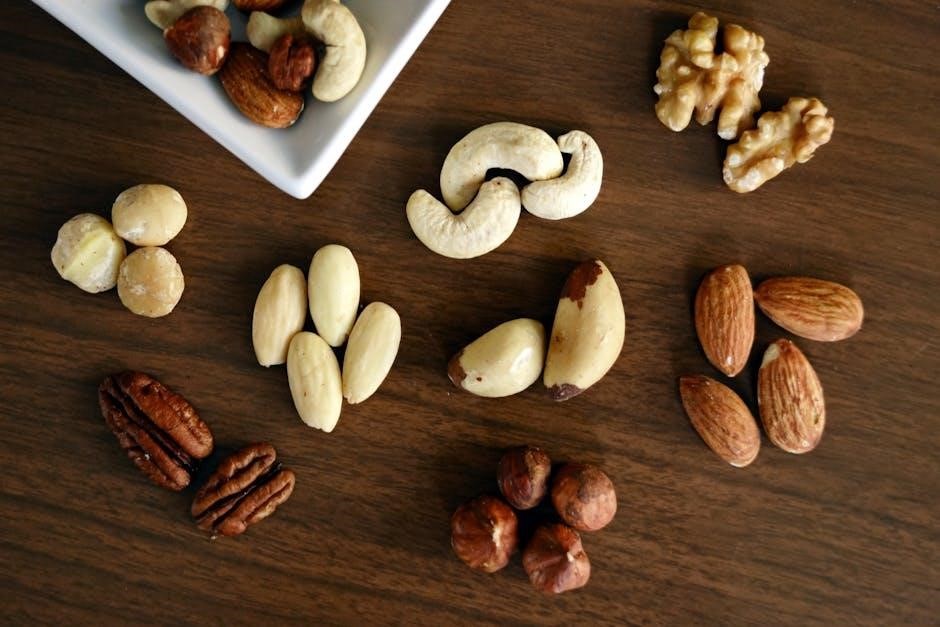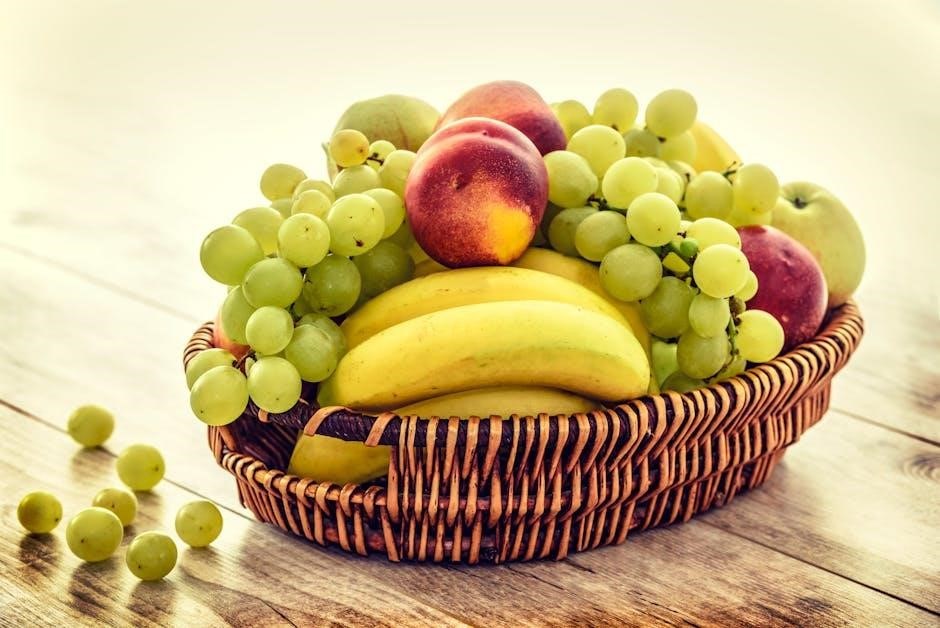The Candida Diet is a specialized eating plan designed to help manage Candida overgrowth, a condition where yeast-like fungi, particularly Candida albicans, proliferate excessively in the body․ This diet focuses on eliminating foods that promote yeast growth while emphasizing nutrient-rich options that support gut health and immune function․
At its core, the Candida Diet is an elimination diet that removes sugars, refined carbohydrates, alcohol, and processed foods, which are known to feed Candida․ By starving the yeast of its primary energy sources, the diet aims to restore balance to the gut microbiome․ It also encourages the consumption of anti-inflammatory and antifungal foods, such as non-starchy vegetables, lean proteins, and healthy fats․

One of the key components of the Candida Diet is the Candida Diet Food List, a comprehensive guide that outlines which foods to eat and avoid․ This list helps individuals make informed grocery choices, ensuring they stick to the dietary plan․ By adhering to this structured approach, individuals can alleviate symptoms of Candida overgrowth, such as bloating, fatigue, and skin issues, and promote long-term wellness․
The diet is not a quick fix but rather a holistic approach to addressing the root causes of Candida imbalance․ It requires commitment and careful planning, but many find it effective in restoring their health and energy levels․ For those embarking on this journey, the Candida Diet Food List serves as an essential tool, providing clarity and guidance every step of the way․

What is the Candida Diet?
The Candida Diet is a specialized dietary plan designed to address Candida overgrowth, a condition where the yeast-like fungus Candida albicans proliferates excessively in the body․ This diet focuses on eliminating foods that promote yeast growth and emphasizing nutrient-dense options that support gut health, immune function, and overall wellness․ It is often recommended for individuals experiencing symptoms such as bloating, fatigue, skin issues, or recurring yeast infections, which may be linked to an overgrowth of Candida in the gut or other parts of the body․

The Candida Diet operates on the principle that Candida thrives on sugars and refined carbohydrates․ By removing these from the diet, individuals can starve the yeast, thereby reducing its population and restoring balance to the gut microbiome․ Additionally, the diet encourages the consumption of anti-inflammatory and antifungal foods, which further inhibit Candida growth and support the body’s natural healing processes․

One of the cornerstone components of the Candida Diet is the Candida Diet Food List, a detailed guide that categorizes foods into “allowed” and “avoid” lists․ This list is invaluable for individuals navigating the diet, as it provides clear direction on which foods to include and which to eliminate․ For example, non-starchy vegetables, lean proteins, and healthy fats are generally permitted, while sugars, refined grains, alcohol, and processed foods are strictly avoided․ The food list also highlights specific ingredients to watch out for, such as hidden sugars in condiments, dressings, and packaged goods․
The diet is typically divided into stages, with the initial phase being the most restrictive․ During this phase, individuals are advised to eliminate all high-sugar and high-carbohydrate foods, including fruits, dairy products, and gluten-containing grains․ As the body begins to heal and Candida levels decrease, some foods may be gradually reintroduced, depending on individual tolerance․ This structured approach ensures that the diet is both effective and sustainable in the long term․

Another key aspect of the Candida Diet is its emphasis on gut health․ Foods rich in fiber, such as leafy green vegetables and certain fermented foods, are encouraged because they promote the growth of beneficial gut bacteria․ These beneficial bacteria play a crucial role in maintaining a balanced microbiome, which is essential for preventing future Candida overgrowth․ Additionally, the diet often recommends incorporating antifungal agents, such as coconut oil and certain herbs, to further suppress Candida activity․
While the Candida Diet is not a cure-all, it has gained popularity due to its focus on addressing the root causes of Candida overgrowth rather than just treating symptoms․ Many individuals report improved energy levels, reduced inflammation, and enhanced overall health after following the diet․ However, it is important to note that the diet may not be suitable for everyone, particularly those with severe dietary restrictions or other health conditions․ Consulting with a healthcare provider or nutritionist is highly recommended before starting the Candida Diet․

Importance of the Candida Diet
The Candida Diet holds significant importance for individuals dealing with Candida overgrowth, offering a structured approach to managing symptoms and restoring overall health․ By focusing on the elimination of sugars and refined carbohydrates, and the inclusion of nutrient-rich foods, the diet plays a crucial role in addressing the root causes of Candida-related health issues․

One of the primary reasons the Candida Diet is important is its ability to starve the Candida fungus of its main food sources, thereby reducing its overgrowth․ Candida albicans thrives on sugars and refined carbs, which are abundant in modern diets․ By removing these, the diet creates an environment where Candida struggles to survive, helping to restore a healthy balance to the gut microbiome․ This is particularly beneficial for individuals experiencing symptoms like bloating, fatigue, and skin problems, which are often linked to Candida overgrowth․

Another key aspect of the Candida Diet is its focus on restoring gut health․ The diet encourages the consumption of foods that promote the growth of beneficial gut bacteria, such as non-starchy vegetables and certain fermented foods․ A balanced gut microbiome is essential for proper digestion, immune function, and overall well-being․ By nurturing beneficial bacteria, the diet helps to create a hostile environment for Candida, making it more difficult for the fungus to overgrow and cause discomfort․
The diet’s emphasis on reducing inflammation is another critical factor in its importance․ Many of the foods recommended on the Candida Diet, such as leafy greens and healthy fats, have potent anti-inflammatory properties․ Chronic inflammation is often associated with Candida overgrowth and can exacerbate symptoms, making it challenging to achieve optimal health․ By incorporating these anti-inflammatory foods, the diet helps to alleviate inflammation, promoting a more balanced and healthy bodily environment․

Additionally, the Candida Diet plays a vital role in boosting the immune system․ A strong immune system is crucial for preventing infections and maintaining microbial balance within the body․ The diet achieves this by focusing on nutrient-dense foods that provide essential vitamins, minerals, and antioxidants․ These nutrients support immune function, enabling the body to more effectively combat Candida overgrowth and prevent future occurrences․
The long-term health benefits of the Candida Diet further highlight its importance․ Beyond managing Candida, the diet can lead to improved energy levels, better digestion, and clearer skin․ Many individuals who adhere to the diet report feeling more vibrant and experiencing fewer health issues overall․ This transformation underscores the diet’s role in promoting holistic health and wellness․

Leave a Reply
You must be logged in to post a comment.